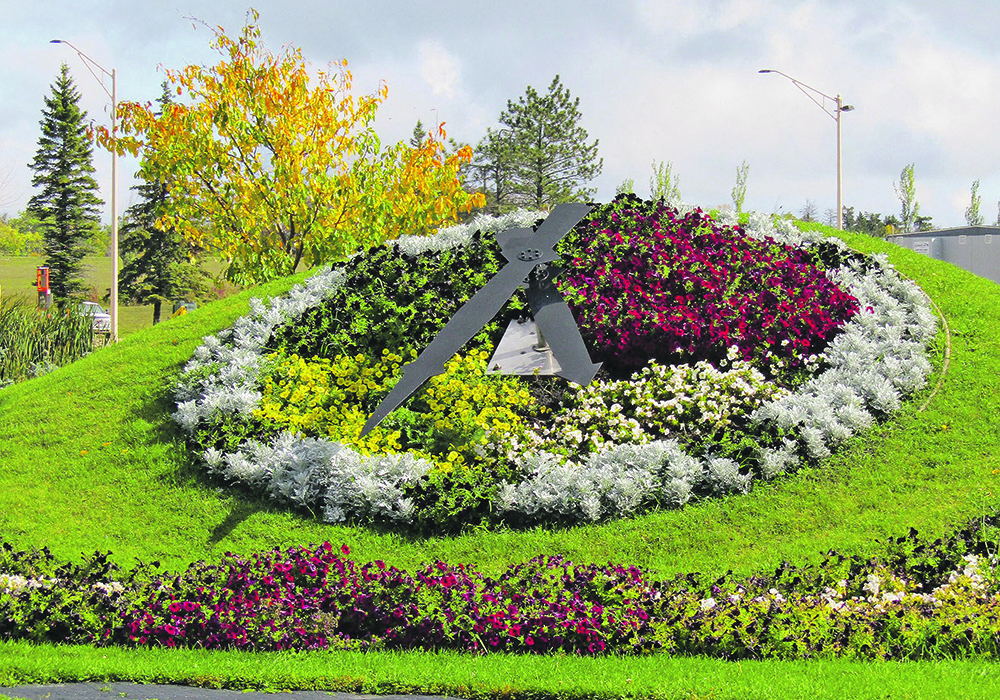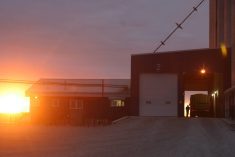International Peace Gardens on the U.S.-Canada border mix outdoor recreation with history and curated garden spaces
The International Peace Gardens, about 24 kilometres south of Boissevain on Highway 10, are known for their botanical grandeur. There’s an extra layer of beauty in late September, when fall foliage is in its prime but before the first killing frost.
For the best experience, choose a sunny day, take your camera and grab your passport for the return through customs. Pick up a map at the entrance when you stop to pay. Day passes for 2024 are $10 per person; children under five get in free.
The International Peace Gardens comprise a 2,400-acre property established in 1932 astride the border of Canada and the U.S. to symbolize the peaceful relationship between the two countries. Attractions are spread along two main roads, one on the Canadian side and one on the U.S. side, with a central 2.4-kilometre loop encapsulating the formal garden area.
Read Also

VIDEO: Bittersweet harvest for this family farmhand
Bruce Burnett helps his brother harvest wheat and canola for the last time on the family farm in Manitoba where they both grew up.
Starting at the entrance, the formal gardens include an 18-foot floral clock, which uses blooms to form the clock face. Nearby, flowers, shrubs, ponds and fountains populate the winding paths of the sunken gardens.

South and southwest of the sunken gardens is the Children’s Nature Play Park, with “animal habitat” play zones, and the newly renovated Conservatory and Interpretive Centre, which displays “approximately 4,000 unique species of cacti and succulents from around the world,” according to promotional materials.
The cacti vary from small, flowered specimens to the towering saguaro, which stretches to the glass ceiling. The conservatory was closed last fall but reopened this summer, doubled in size with a multimillion-dollar expansion. Visitors can wander through the vegetation and visit the accompanying gift shop and restaurant.

Alternatively, start with a scenic drive around the less formal parts of the site.
The Canadian and American sections of the property vary significantly. The Canadian side is mostly forested, with small lakes and four lovely picnic spots overlooking the water. In autumn, those trees create a wonderful display of coloured leaves that are well worth a stop to enjoy the view, even if you didn’t bring a lunch.
At the peak of the loop lies the Peace Chapel, which features inspirational quotations from famous people. These are inscribed on the Tyndall stone walls, which are also embedded with marine fossils. The structure can be approached on either the Canadian or U.S. side.
Be sure to drive the whole Canadian loop, ending back at the entrance, so you don’t miss the row of sugar maple trees east of the Peace Chapel parking lot. These trees are spectacularly bright red and orange in autumn.

The American side is equally scenic, but more open for much of the way. Between the Peace Chapel and main garden lies the 9/11 memorial site, created with 10-foot steel girders from the wreckage of New York’s Twin Towers. Read the memorial poem and the list of firefighters who died in the tragedy. It is across from the Carillon Bell Tower, which plays every quarter hour.
From the Peace Chapel, continue south on the U.S. drive. The North American Game Warden Wildlife Museum is closed in autumn, but visitors can still see the Hall of Honors behind it. This is a memorial dedicated to wildlife enforcement officers from both Canada and the U.S. who died in the line of duty.

Farther around the southern loop are the International Music Camp and the former Athletic Camp, the Masonic Auditorium, a historic lodge built in the 1930s, more picnic areas and a campground.
For more physical activity, bring a bicycle. The roads throughout the grounds are excellent for cycling, with gently rolling hills and not much traffic in the fall. On the Canadian side there is also a short hiking trail where you might spy white-tailed deer or other wildlife.
If you have more time to explore, make some stops as you head back into Canada through Turtle Mountain Provincial Park. Adam Lake Campground will be closed for camping, but you can drive to the lake and wander along the beach, or try the fitness trail or a longer hiking trail.
A kilometre or so farther north is Bower Lake, famous for trout fishing. A short hiking trail follows the north shore where you might see pelicans, cormorants and painted turtles along the water’s edge.
Fall, before a frost, is the ideal time to visit this area, but if that doesn’t fit your schedule, remember that spring and summer have many attractions as well. Flower displays at the International Peace Gardens are magnificent then. Check peacegarden.com for more pictures and information.

















